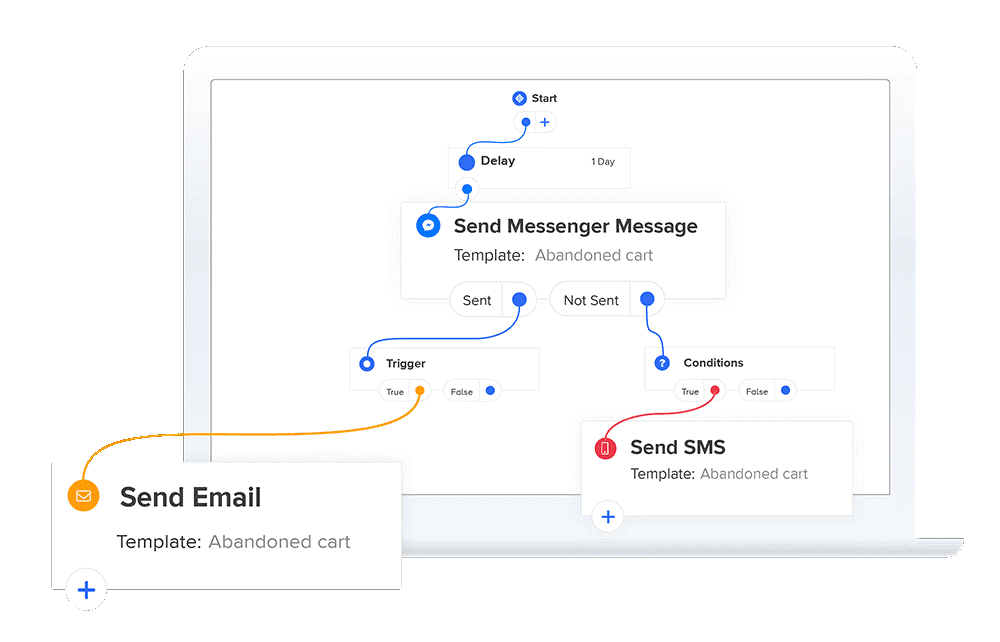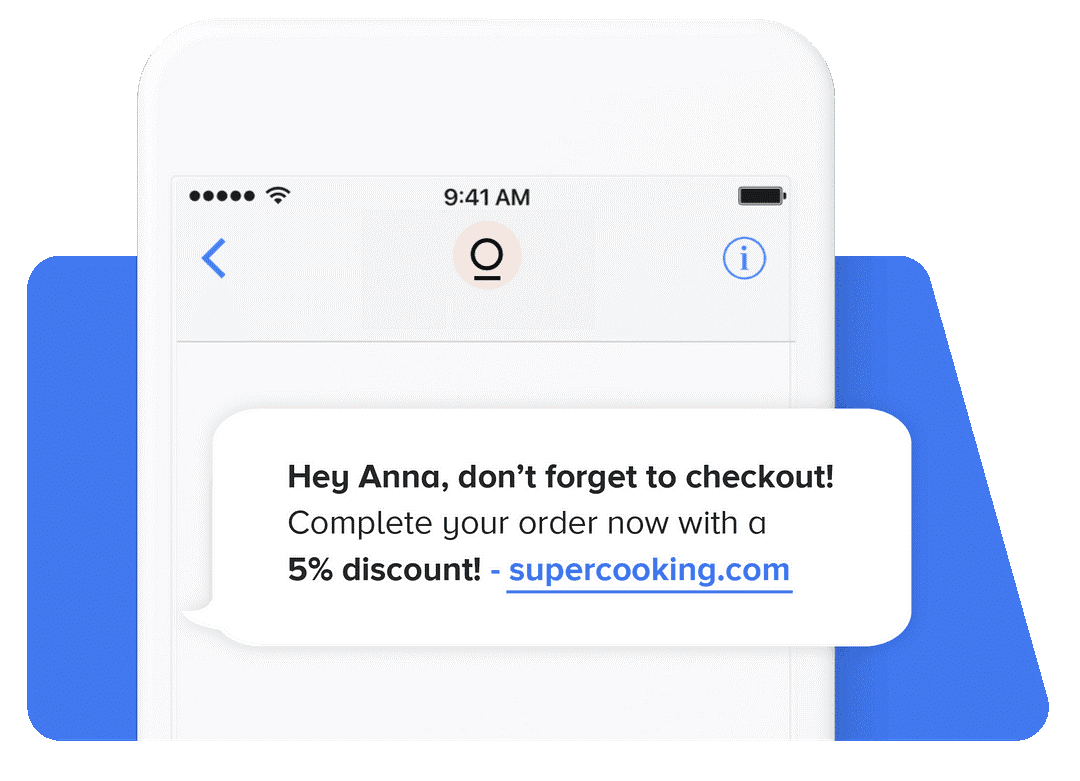Ecommerce marketing automation is important to the success of digital marketing campaigns. It saves valuable time and money while increasing the effectiveness of your activities.
Marketers that use automation are able to shorten sales cycles, better retain customers, and demonstrate higher returns on investment. In the wake of COVID-19, improving these metrics has never been more important.
The pandemic has contributed to the dramatic increase in customer acquisition costs. As such, marketers can't afford to waste time, miss opportunities, and offer sloppy customer experiences.
The benefits of ecommerce marketing automation
It saves time
More automation means less repetition and more time for strategy. In a post-pandemic world, time is precious--and wasted time means wasted revenue opportunities.
From planning to reporting, ecommerce marketing automation eliminates manual processes. It frees up time for marketers to focus on the areas where they add value, instead of getting lost in busywork.
Without marketing automation, it's nearly impossible to execute highly-coordinated campaigns at scale. Campaigns without automation are less relevant, less timely, and less effective.
Ecommerce marketing automation nurtures leads
Lead nurturing is an essential tactic to move customers through the sales funnel. According to Forrester Research, companies that excel at lead nurturing generate 50% more sales-ready leads at a 33% lower cost.
However, lead nurturing is a process. It requires consistent delivery of relevant and timely content to prospects. As such, automation is a necessary tool to nurture leads at scale.
When prospects get the right information at the right time, they are more likely to take action. This reduces the sales cycle length, which is a top priority for ecommerce businesses.
It enables multichannel experiences
People today are engaged across various devices, platforms, and apps. Each channel serves a specific purpose or preference--and represents a unique opportunity for retailers.
Ecommerce marketing automation helps you engage with customers meaningfully across channels. You'll reach customers where they are most likely to respond, which increases click-through and conversion rates.
Combining channels like SMS and email increases customer engagement tenfold. It helps break through the clutter, creates urgency, and inspires people to take action now.

Ecommerce marketing automation drives repeat customers and loyalty
Ecommerce marketing automation allows you to deliver better customer experiences. You can send personalized recommendations, timely offers, and respond to customer behavior in real-time.
These tactics improve customer satisfaction, drive repeat purchases, and increase brand loyalty. As it becomes increasingly difficult to acquire new customers, it's important that you're able to find growth opportunities within your existing customer base.
It helps measure and monitor campaigns
Lastly, ecommerce marketing automation tools will help you measure and monitor your campaign performance. Marketing automation is a data-driven science, and it will give you the insights you need to prove if your efforts are working.
More than that, it helps you quickly test different strategies and messages. You can easily run A/B tests and make changes accordingly.
Carts Guru
Multi-channel marketing automation module for e-commerce.
Send abandoned cart campaigns, win-back campaigns, upsell campaigns, and more. Connect with potential and existing customers over SMS, email, and Facebook Messenger to increase conversions.
6 ecommerce marketing automation workflows that boost sales
In an ideal world, you would personally connect with every individual that interacts with your brand. That's the goal of ecommerce marketing automation. It helps you to respond to the behavior of each individual customer in a way that adds value.
Ecommerce marketing automation is powered by workflows and triggers. A trigger is just an input that activates an automated workflow--like a form completion, purchase, or event.
Below are 6 of the most common workflows that ecommerce marketers use to boost sales.
1.Welcome messages
Welcome messages are a great way to make a good first impression. A welcome message is triggered when a customer opts-in to receive your marketing communications.
Welcome messages should include an introduction, as well as what to expect in future communications. It should also go over the benefits of being a subscriber and the next steps that will help move them through the customer journey.
2.Cart abandonment
A cart abandonment workflow is triggered when a customer puts items in their cart without completing the purchase. Your customers are telling you which products they're interested in; sometimes they just need an extra push.
Cart abandonment campaigns create urgency and help stop you from losing customers at the last hurdle. Instead, you can bring them right back to your store to complete the purchase.

3.Customer win-back campaigns
Customer win-back campaigns use your customer lists to trigger an automation sequence. You can even automate your marketing lists so that if someone has been inactive for a set period of time, they'll automatically be added to your list of lapsed customers.
Customer win-back campaigns are especially important today, as customer acquisition costs are higher than ever. Again, nurturing the customers you already have is more cost-effective than acquiring new ones.
4.Personalized recommendations
Personalized recommendations are another lead nurturing workflow. This automation sequence lets you suggest relevant products at the right moment, automatically.
Personalized recommendations can be triggered by past purchase behavior or browsing behavior. They are an important way to make communications more relevant and inspire customers to take action
5.Transactional messages
Transactional emails (like order confirmations) instill confidence in shoppers. You acknowledge that their order has been placed and assure them that it's on the way.
Shipping updates are another example of transactional emails. They help you set expectations and keep customers in the loop. Most customers expect and appreciate transactional emails, and will be concerned if they don't receive them.
6.Refill/reminder campaigns
Lastly, refill and reminder campaigns are a great way to encourage repeat purchases. Your repeat purchase rate is a strong indicator of brand loyalty and is a fundamental KPI for ecommerce businesses.
Refill and reminder campaigns are especially important if you sell cosmetics, supplements, vitamins, food items, and other types of frequently purchased goods.
The time trigger used for a refill/reminder campaign will vary based on the ecommerce vertical. Once you understand the repurchase frequency, you can set up workflows that automatically message customers when it's time for them to buy again.
Again, this type of campaign would be impossible to achieve at scale without the use of ecommerce marketing automation.
Selecting an ecommerce marketing automation platform
There are a few things to look out for when choosing an ecommerce marketing automation tool. You'll want to select a platform that uses a multichannel approach. There is much more to ecommerce marketing than just email campaigns, and the tool you choose should reflect that.
For example, with the Carts Guru PrestaShop module, you can connect with potential and existing customers through SMS, email, and Facebook Messenger. Carts Guru provides pre-built, customizable campaigns for all the use cases outlined above.
To get started with ecommerce marketing automation, download Carts Guru for free:
Carts Guru
Multi-channel marketing automation module for e-commerce.
Send abandoned cart campaigns, win-back campaigns, upsell campaigns, and more. Connect with potential and existing customers over SMS, email, and Facebook Messenger to increase conversions.
via https://AiUpNow.com May 12, 2021 at 02:54AM by Jenna Alburger, Khareem Sudlow,
